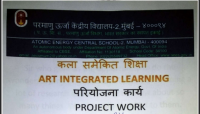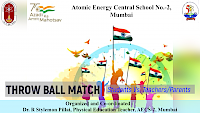Badminton
A little introduction about Badminton and how to play it.
INTRODUCTION :
- Badminton are played on a rectangular indoor court..
- It is played in singles, doubles and mixed doubles category.
- Badminton is a racquet sport played using racquets to hit a shuttlecock across a net.
- Early on, the game was also known as Poona or Poonah.
- The Badminton World Federation (BWF) is the internationally recognized governing body.
- Badminton Association of India (BAI) is the governing body for Badminton in India.
- Badminton made its debut as a demonstration sport at the 1972 Olympic Games in Munich.
SPECIFICATIONS :
- The Court :
- In singles, a badminton court is 13.41m long and 5.18m wide. The width extends to 6.1m in doubles.
- The net is 1.55m high at the ends and 1.52m high where it dips in the middle.
- A serve must pass the short service line, which is 1.98m from the net.
- Beyond the short service line, there is a line which runs down the middle to split the left and right service courts.


- The Racket :
- Modern Badminton Rackets are light in weight and usually below 100 grams.
- The frame of the Racket can be made of steel, aluminium, carbon fiber, ceramic, boron or a combination of some of these.
- It shall not exceed 68 cm in overall length and 23 cm in overall width.
- Shuttle Cock :
- A shuttlecock (also called a bird or birdie) has an open conical shape formed by feathers embedded into a rounded cork or rubber base.
- The birdie’s shape means it will always fly cork-first once struck, and remain so until hit again.
- The shuttle shall have 16 feathers fixed in the base. It is between 62-70 mm long and weigh between 4.74 and 5.5g.

GENERAL RULES :
- SERVICE RULES
- Each game will start with a toss. The correct guess gives the "winner" the option (a) to serve or receive first. (b) to start play at one end of the court or the other.
- A player must wait until his opponent is ready before serving. If the opponent attempts to return the serve, he/she is considered ready and play continues.
- The feet of both players [server and receiver] must remain in a stationary position until the serve is made. Your feet can not be touching the line at this time.
- The shuttle cannot be caught and threw with the racket.
- Players must serve diagonally across the net to their opponent to the correct service court. As points are won then serving stations move from one side to the other.
- A serve must be hit underarm and below the servers waist. No overarm serves are allowed.
- If a player touches the net with any part of their body or racket then it is deemed a fault and their opponent receives the point.
- Hitting the shuttle twice in succession by a player or team.
- All service must pass the short service line
- A ‘‘Let’’ (Replayed/ Re-Service) :
- The umpire shall call Let if an unforeseen or accidental circumstance arose.
- If the server serves before the receiver is ready during service.
- The receiver and the server are both faulted during play.
- The shuttle disintegrates and the base completely separates from the rest of the shuttle.
- A line judge is unsighted and the umpire is unable to make a decision.
- Scoring System :
- A match consists of the best of 3 games of 21 points.
- Every time there is a serve – there is a point scored.
- The side winning a rally adds a point to its score.
- At 20 all, the side which gains a 2 point lead first, wins that game.
- At 29 all, the side scoring the 30th point, wins that game.
- The side winning a game serves first in the next game.
- A 1 minute interval between each game is allowed.
- Players shall change ends :(a) at the end of the first game (b) at the end of the second game, if there is to be a third game (c) in the third game when a side first scores 11 points.
- Singles
- At the beginning of the game (0-0) and when the server’s score is even, the server serves from the right service court. When the server’s score is odd, the server serves from the left service court.
- If the server wins a rally, the server scores a point and then serves again from the alternate service court.
- If the receiver wins a rally, the receiver scores a point and becomes the new server. They serve from the appropriate service court – left if their score is odd, and right if it is even.
- A side has only one ‘service’.
- At the beginning of the game and when the score is even, the server serves from the right service court. When it is odd, the server serves from the left court.
- If the serving side wins a rally, the serving side scores a point and the same server serves again from the alternate service court.
- If the receiving side wins a rally, the receiving side scores a point. The receiving side becomes the new serving side.
- The players do not change their respective service courts until they win a point when their side is serving.
FUNDAMENTAL SKILLS :
- GRIP :
- 1. Forehand Grip
- 2. Backhand Grip


SERVICES :



- Forehand service : The forehand serve is typically executed in a singles game. Before you execute the forehand serve, stand at about 2 metres away from the net and with the racket leg behind. Racket and shuttle bearing hands in position.
- Backhand service : The backhand serve is commonly used both in doubles and singles.To get ready to execute the backhand serve, stand with your racket foot forward, and with the shuttle and racket bearing-arms forward in position.


HEALTH BENEFITS :
- Helps to stay fit and lose weight
- Helps in maintaining physique and muscle toning
- Improves metabolic rate
- Increases concentration and reflex action
- Improves heart functioning
- Improves muscle strength and flexibility
- Increases bone density
FAMOUS PLAYERS :
Arjuna Award : The Arjuna Awards are given by the Ministry of Youth Affairs and Sports, Government of India to recognize outstanding achievement in sports.
- NATIONAL : Pullela Gopichand [Many Awards], PV Sindhu [Arjuna Award-2013], Saina Nehwal [Arjuna Award-2009] B. Sai Praneeth [Arjuna Award-2019]
- INTERNATIONAL : Lee Chong Wei (Malaysia), Chen Long (China), Lin Dan (China), Carolina Marin (Spain)
IMPORTANT CUPS AND TROPHIES :
- NATIONAL : Agarwal Cup, Amrit Diwan Cup
- INTERNATIONAL : Thomas Cup (Men), Uber Cup (Women)





